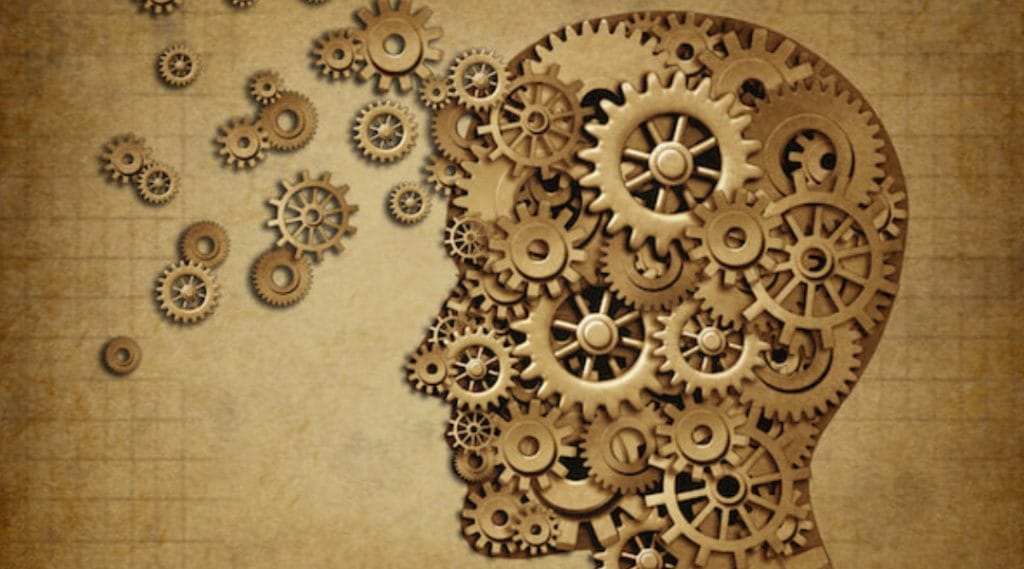We all get it. Most of us have had an injury that has settled at some point, but for some pain hangs around longer than we would expect. Why does this occur? And when it does, what can be done? In this article, Musculoskeletal Physiotherapist Mike Callan will talk about pain; how it works, factors that can affect how much pain we feel, and strategies for those who suffer with persisting pain.
Pain is well, a pain. But what is it exactly? An emotion? Physical damage in the body? In reality it is much more. Pain is a complex psychological experience that is different for each person. The experience of pain occurs when your body’s alarm system alerts the brain to actual or potential tissue damage. There is no such thing as pain nerves in our bodies. We have millions of detectors in our body known as nociceptors, which are located in skin, muscle, bone, joint, ligament, blood vessel, disc, and nerve. When stimulated, these detectors can send signals through our nerves to our spinal cord, then on to the brain. But these are not inherently painful. The messages sent from the receptors and nerves are just a ‘danger’ signals; the brain then decides whether or not we experiencing pain, and how strongly we feel it based on how threatening the signal is.

Not all pain that we feel is equal, and it does not necessarily mean that our body is damaged. We can feel pain for different reasons, which loosely fall into three categories. We can feel pain as a protective measure before we do structural damage to our body. An example is when we touch a hot frying pan on the stove. We feel immediate pain, which is designed to get us to withdraw from the potentially dangerous source. But if we look down at our hand, rarely are we actually burnt or injured. In this case, the pain system is a smoke alarm, and there is smoke, but no fire.
The second category of pain is when we have actual tissue damage. Think of your favourite footballer who tries to kick a goal and tears a hamstring. The muscle bruises and swelling is present, which is the body initiating the repair process. There may be resting ‘danger signal’ from the presence of inflammatory chemicals, and when the player tries to contract the hamstring, they experience pain to stop them from further injuring it. The smoke alarm has gone off because there is actually a small fire in the kitchen.

Finally, pain can be present when there is not tissue damage, or when tissues have previously healed. In this case, the brain, spinal cord and nervous system can all be firing so the person experiences pain without structural damage. A prime example is phantom limb pain, when there is no actual limb, yet the individual feels pain. In this example, the smoke alarm is going off, but nothing is actually happening in the kitchen. This category can mistakenly be labelled as ‘psychological’, when physiological processes are happening in the brain and nervous system.
Making matters more complex, the brain and nervous system can get better at detecting danger and feeling pain the longer pain persists. Just like we learn a new skill like piano and get better the more we practise, the brain can get better at feeling pain, and can get better at detecting danger by making more neurotransmitters and receptors in the nervous system. This is how the pain system becomes more sensitive and easier to trigger. But hope is not lost! The same processes that allow us to feel pain more easily over time can also work in the reverse process. The brain and nervous system can be de-sensitised over time with a number of strategies that will be discussed below.
As there are two sides to a coin, there are two sides to the pain system in the body. There is a detection system and a pain-dulling system. This complicated pain-dulling system is strengthened when we exercise, get a good night’s sleep, are in a better mood, and when we have manual therapy.
The body’s pain system is constantly changing. The amount of pain we feel at any given time is much like the volume on our TV. If the pain system is very sensitive, the volume is on high. Every conversation is like shouting, and that action scene is almost deafening. Vice versa, when the volume is turned down, we might not hear conversations at all and the action scene might not make that much noise. Factors that can alter our perception of pain (changing the volume) include: sleep, mood, stress, exercise, previous pain experience, upbringing and beliefs around pain, anxiety, depression, fear of pain or injury, and hypervigilance (paying too much attention to pain). Additionally, genetics can play a role in how much pain we feel. Research has shown that individuals with fibromyalgia, irritable bowel syndrome (IBS), chronic jaw pain (TMJ), and chronic tension headache may be genetically pre-disposed to having a more sensitive pain system. Individuals with these co-existing conditions should be made aware of this to allow more appropriate pain management.

For those who have persistent pain, there are currently evidence-based strategies to help manage pain.
- ‘Know pain, know gain’. Knowledge is power. Understand that pain does not always equal harm or tissue damage.
- Pacing. Slow and steady wins the race. In those with persistent pain or a more sensitive pain system, pain often flares-up following a large increase in activity or a new, unaccustomed activity. Small amounts of regular activity with a gradual, consistent increase is the key. Evidence suggests a 10% increase in activity per week as a guideline to avoid booming and busting.
- Avoiding painful activities is not helpful. The body will gradually increase its tolerance to painful activities the same way your fitness gets better the more you run. Avoidance doesn’t allow the body to adapt. Use pacing, but gradually do more aggravating things, even if they cause a bit of pain.
- Strengthen the pain inhibiting system. This involves appropriate daily exercise, activities that elevate mood, and sleeping well.
- Focus on functional gains, not pain levels. Those who focus on returning to normal day to day function and daily activity do better in the long run than those who focus just on pain.
- Sleep well and prepare your body for sleep. Sleep is critical for sensitivity of the pain system and tissue healing.
- Pain management is important, especially in the early stages of increasing exercise and returning to function. But some pain medications do not have evidence for long term use, and in fact can turn up your pain volume. Speak to a health care professional to ensure your pain management is appropriate.
- Passive (relying on others) strategies can have a short term benefit, whereas active strategies have longer term benefits! Our Physiotherapists can help you take control of your body rather than rely on someone else.
- Make sure you are addressing the factors that are specific to you! If factors like stress or poor sleep are contributing to your disorder, ensure you are taking steps to managing them. Person-specific management will always work better than generic management!
At Central Bassendean Physiotherapy we understand pain and provide individualised management strategies to help you get back to doing activities that are important to you.
References
Butler, David S. and Moseley, G. Lorimer Explain Pain
First edition 2003. Published by Noigroup Publications for NOI Australasia, Pty Ltd.
Further information
https://painhealth.csse.uwa.edu.au/
Author

Mike Callan
Senior Musculoskeletal Physiotherapist
Curtin University 2010
Throughout his career, Mike has taken every opportunity to learn and upgrade his skills, completing courses in shoulder treatment, neck and back pain, hip and groin pain, gym rehabilitation, dry needling, and chronic pain management. Mike also has experience with sporting injuries as Physiotherapist for various rugby, football and tennis clubs around Perth, as well as being part of medical teams for various tri-sport events in WA.

